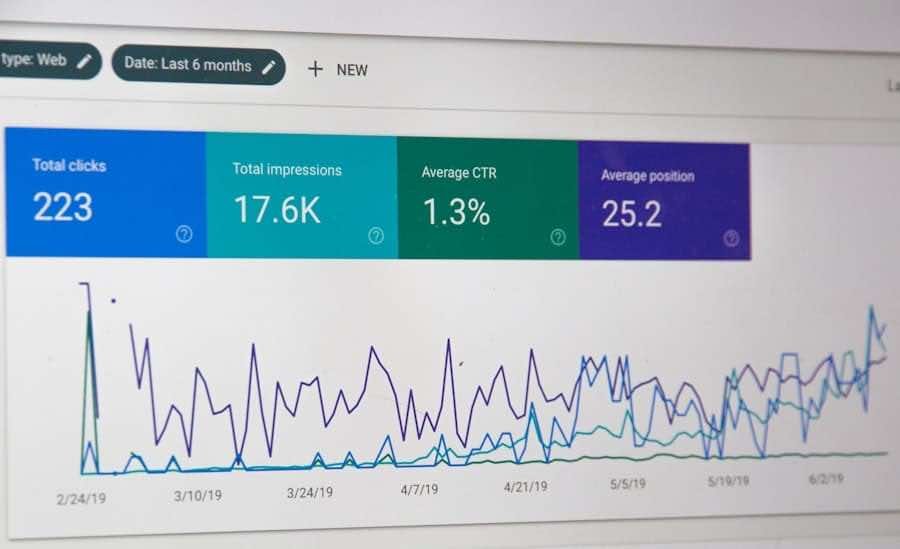Trend-based decision making is a strategic approach that involves analysing patterns and shifts in various sectors to inform business choices. This methodology relies on the understanding that trends, whether they are economic, social, technological, or environmental, can significantly influence market dynamics and consumer behaviour. By recognising these trends, organisations can position themselves advantageously, ensuring they remain relevant and competitive in an ever-evolving landscape.
The essence of trend-based decision making lies in its proactive nature; rather than merely reacting to changes as they occur, businesses can anticipate shifts and adapt their strategies accordingly. At its core, trend-based decision making requires a keen awareness of the external environment. This involves not only monitoring current trends but also understanding the underlying factors that drive these changes.
For instance, the rise of remote work has been influenced by technological advancements, shifting societal norms, and recent global events such as the COVID-19 pandemic. By analysing these interconnected elements, organisations can make informed decisions that align with emerging trends, ultimately leading to more sustainable growth and success.
Summary
- Trend-based decision making involves using current and historical data to identify patterns and make informed decisions for the future.
- Identifying trends is important as it allows businesses to anticipate changes in the market, customer preferences, and industry developments.
- Data and analytics play a crucial role in trend analysis, providing valuable insights into consumer behaviour, market trends, and competitive landscape.
- Incorporating trends into strategic planning helps businesses stay ahead of the curve and adapt to changing market conditions.
- Trend-based decision making is essential for businesses to remain competitive, innovate, and seize opportunities in the market.
The Importance of Identifying Trends
Identifying trends is crucial for any organisation aiming to thrive in a competitive market. Trends serve as indicators of where the market is heading and can provide valuable insights into consumer preferences and behaviours. For example, the increasing demand for sustainable products has prompted many companies to rethink their supply chains and product offerings.
By recognising this trend early on, businesses can not only meet consumer expectations but also differentiate themselves from competitors who may be slower to adapt. Moreover, identifying trends allows organisations to mitigate risks associated with market fluctuations. By staying attuned to emerging patterns, businesses can anticipate potential challenges and develop strategies to address them before they escalate.
For instance, during economic downturns, companies that have identified a trend towards frugality among consumers can adjust their marketing strategies to emphasise value and affordability. This proactive approach not only helps in retaining customers but also positions the organisation as a responsive and responsible entity in the eyes of its stakeholders.
Utilising Data and Analytics for Trend Analysis

In the age of information, data and analytics play a pivotal role in trend analysis. The vast amounts of data generated daily provide organisations with unprecedented opportunities to uncover insights that were previously unattainable. By employing advanced analytical tools and techniques, businesses can sift through this data to identify patterns and correlations that may indicate emerging trends.
For instance, social media analytics can reveal shifts in consumer sentiment or preferences, allowing companies to adapt their strategies in real-time. Furthermore, predictive analytics can enhance trend analysis by forecasting future developments based on historical data. By leveraging machine learning algorithms and statistical models, organisations can gain insights into potential market shifts before they occur.
For example, a retail company might analyse purchasing patterns over several years to predict seasonal trends or shifts in consumer behaviour. This foresight enables businesses to optimise inventory management, marketing campaigns, and product development efforts, ultimately leading to improved operational efficiency and customer satisfaction.
Incorporating Trends into Strategic Planning
Incorporating identified trends into strategic planning is essential for ensuring that an organisation remains agile and responsive to market changes. This process begins with aligning the organisation’s vision and goals with the insights gained from trend analysis. For instance, if a company identifies a growing trend towards health-consciousness among consumers, it may choose to develop new product lines that cater to this demand.
This alignment not only enhances the relevance of the organisation’s offerings but also fosters a culture of innovation. Moreover, integrating trends into strategic planning requires collaboration across various departments within an organisation. Marketing teams must work closely with product development and supply chain management to ensure that new initiatives are feasible and aligned with market demands.
For example, if a technology firm identifies a trend towards increased demand for smart home devices, cross-departmental collaboration will be essential in developing a cohesive strategy that encompasses product design, marketing campaigns, and distribution channels. This holistic approach ensures that all aspects of the organisation are working towards a common goal, maximising the potential for success.
The Role of Trend-Based Decision Making in Business
Trend-based decision making plays a critical role in shaping the future of businesses across industries. By adopting this approach, organisations can enhance their ability to innovate and respond to changing market conditions. For instance, companies that actively engage in trend analysis are often better positioned to launch new products or services that resonate with consumers.
This agility not only fosters customer loyalty but also drives revenue growth as businesses tap into emerging markets. Additionally, trend-based decision making fosters a culture of continuous improvement within organisations. By regularly assessing market trends and consumer behaviours, businesses can identify areas for enhancement and optimisation.
This iterative process encourages teams to experiment with new ideas and approaches, ultimately leading to greater creativity and innovation. For example, a fashion retailer that closely monitors trends in sustainable materials may experiment with eco-friendly fabrics in its collections, thereby appealing to environmentally conscious consumers while also differentiating itself from competitors.
Challenges and Limitations of Trend-Based Decision Making

Despite its numerous advantages, trend-based decision making is not without its challenges and limitations. One significant hurdle is the risk of over-reliance on trends that may be fleeting or superficial. Businesses must exercise caution when interpreting data and avoid making decisions based solely on short-term trends that lack long-term viability.
For instance, a company might be tempted to pivot its entire strategy based on a viral social media trend without considering whether it aligns with its core values or long-term objectives. Another challenge lies in the sheer volume of data available for analysis. While having access to extensive data sets can be beneficial, it can also lead to information overload.
Organisations may struggle to discern which trends are genuinely relevant to their business objectives amidst the noise of irrelevant data points. To mitigate this issue, companies must establish clear criteria for evaluating trends and focus on those that align with their strategic goals. This disciplined approach ensures that decision-making remains grounded in meaningful insights rather than being swayed by transient fads.
Examples of Successful Trend-Based Decision Making
Numerous organisations have successfully leveraged trend-based decision making to achieve remarkable results. One notable example is Netflix, which has consistently adapted its content strategy based on viewing trends and consumer preferences. By analysing data on viewer behaviour, Netflix has been able to identify popular genres and themes, leading to the production of original content that resonates with its audience.
This data-driven approach has not only attracted millions of subscribers but has also positioned Netflix as a leader in the entertainment industry. Another example is Nike’s response to the growing trend of sustainability within the fashion industry. Recognising the increasing consumer demand for eco-friendly products, Nike launched its “Move to Zero” initiative aimed at reducing waste and carbon emissions throughout its supply chain.
By aligning its brand with sustainability trends, Nike has successfully appealed to environmentally conscious consumers while enhancing its corporate reputation. This strategic decision not only reflects an understanding of market dynamics but also demonstrates how trend-based decision making can drive both profitability and positive social impact.
Tips for Implementing Trend-Based Decision Making in Your Organisation
Implementing trend-based decision making within an organisation requires a structured approach that fosters collaboration and innovation. One key tip is to establish a dedicated team responsible for monitoring market trends and conducting regular analyses. This team should comprise individuals from diverse backgrounds and departments to ensure a holistic perspective on emerging trends.
By fostering cross-functional collaboration, organisations can enhance their ability to identify relevant trends and develop comprehensive strategies. Additionally, investing in advanced analytics tools can significantly enhance an organisation’s capacity for trend analysis. These tools enable businesses to process large volumes of data efficiently and derive actionable insights quickly.
Training employees on how to utilise these tools effectively is equally important; equipping staff with the necessary skills ensures that trend analysis becomes an integral part of the organisational culture. Finally, organisations should cultivate an environment that encourages experimentation and agility. Embracing a mindset of continuous improvement allows teams to test new ideas based on identified trends without fear of failure.
By celebrating successes as well as learning from setbacks, organisations can foster a culture of innovation that drives long-term growth and adaptability in an ever-changing business landscape.
Trend-based decision making is crucial for businesses to stay ahead in today’s fast-paced market. By analysing current trends and making informed decisions based on this data, companies can adapt and thrive in an ever-changing environment. For more tips on how to make successful business presentations, check out this article. It provides valuable insights on how to engage your audience and deliver a compelling message. Additionally, as businesses prepare to reopen post-COVID, it is essential to ensure that your office is ready for the new normal. Learn how to prepare your office for post-COVID reopening by reading this article.
FAQs
What is trend-based decision making?
Trend-based decision making is a strategy that involves using current and historical trends to inform and guide decision making processes. This approach relies on the analysis of patterns and trends in data to make informed decisions about future actions.
How does trend-based decision making work?
Trend-based decision making involves collecting and analyzing data to identify patterns and trends. This data can come from a variety of sources, including market trends, consumer behaviour, and historical performance. By identifying and understanding these trends, decision makers can make more informed choices about future actions.
What are the benefits of trend-based decision making?
Trend-based decision making can provide several benefits, including the ability to anticipate and adapt to changes in the market, identify new opportunities for growth, and make more accurate predictions about future outcomes. By using data-driven insights, organisations can make more informed and strategic decisions.
What are the potential drawbacks of trend-based decision making?
While trend-based decision making can provide valuable insights, it is important to consider the limitations of this approach. Trends are not always indicative of future outcomes, and relying solely on historical data may overlook important contextual factors. Additionally, trends can change rapidly, so decision makers must be prepared to adapt their strategies accordingly.
How can trend-based decision making be implemented in an organisation?
Implementing trend-based decision making in an organisation involves establishing processes for data collection, analysis, and interpretation. This may involve using data analytics tools, conducting market research, and collaborating with experts in the field. It is also important to create a culture that values data-driven decision making and encourages continuous learning and adaptation.
